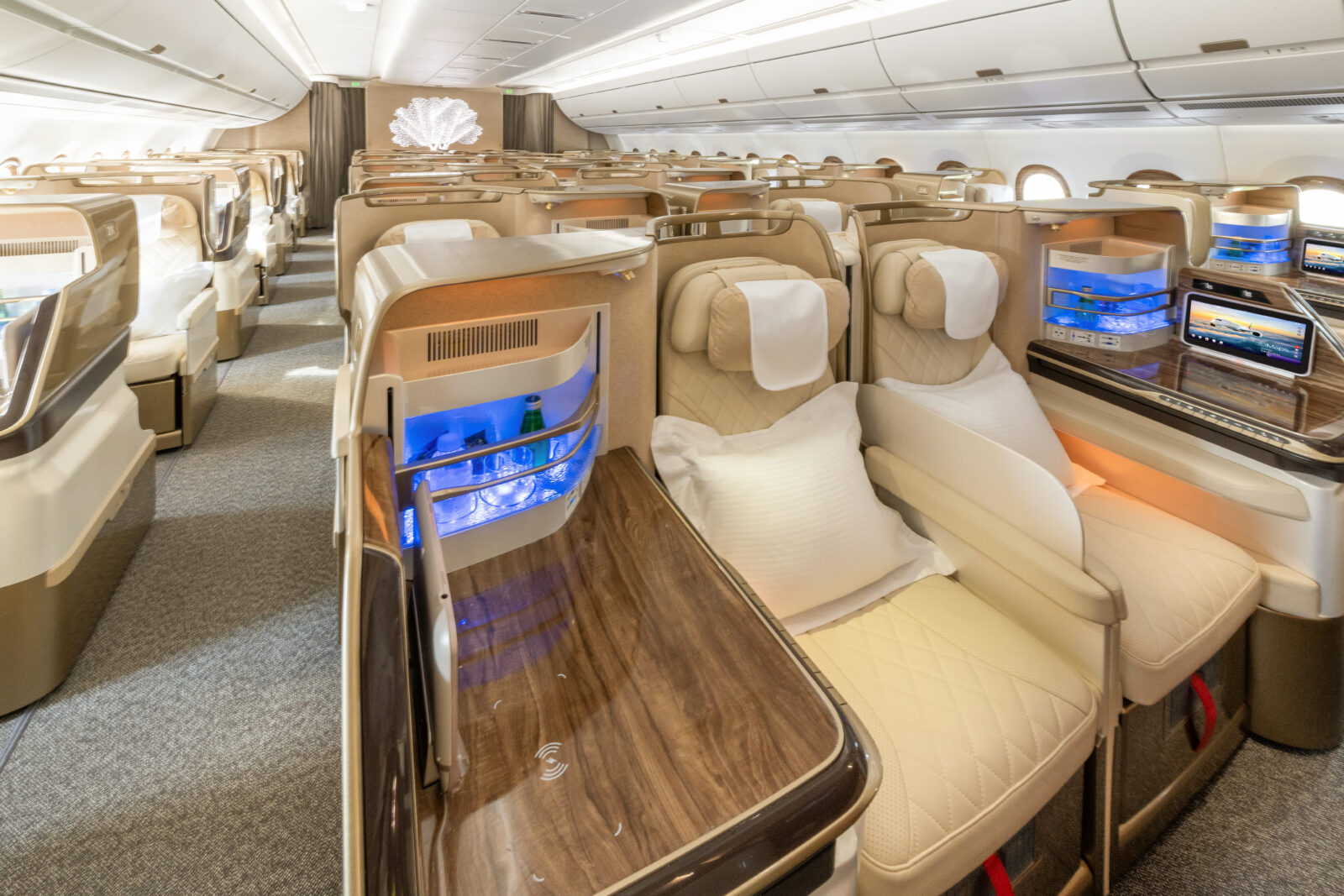
Last week, Emirates unveiled its hotly anticipated new Airbus A350-900 widebody aircraft, which is set to debut on flights between Dubai and Edinburgh beginning on January 3, 2025.
The introduction of the Airbus A350 is the first time in more than 16 years that Emirates has inaugurated a new aircraft model to its fleet since the iconic and now flagship A380 Superjumbo was ushered into service on August 1, 2008.
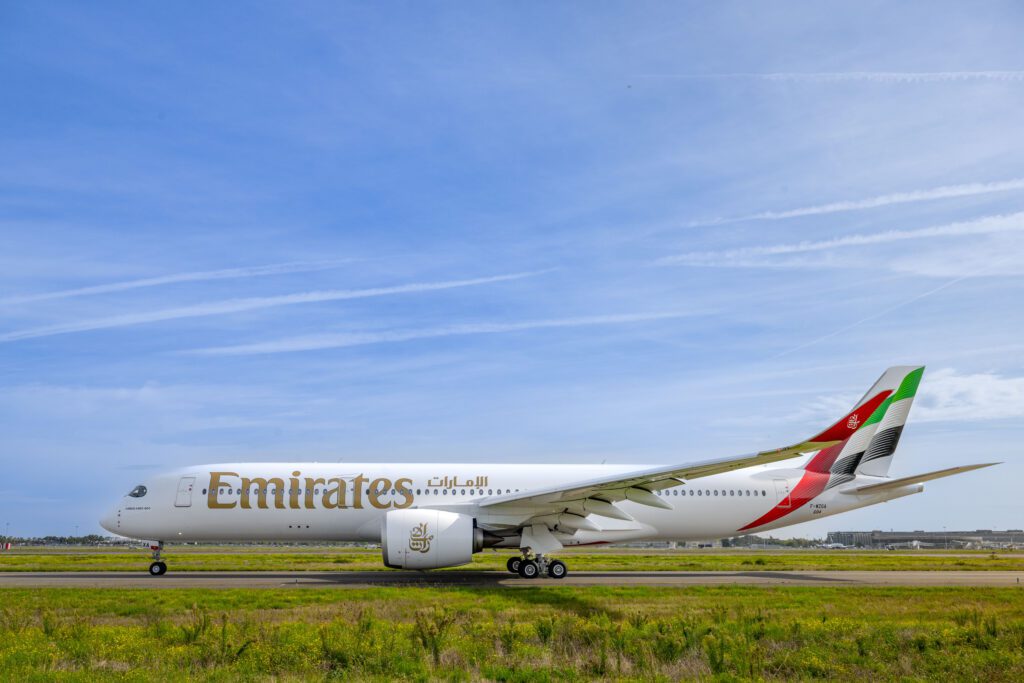
As a result, the A350 is a major milestone for the Dubai-based carrier and effectively a blueprint for what passengers can expect the Emirates onboard experience to be like for decades to come.
It may have then come as a bit of a disappointment to senior leaders at the airline that the launch seemed like a letdown to many industry insiders and experts who had been hoping (perhaps foolishly) for some revolutionary product innovation to be introduced.
For its Business Class cabin, Emirates simply launched an updated version of the same Safran-produced staggered seats that passengers have become well accustomed to on the airline’s superjumbo fleet.
That is, perhaps, the point. Until now, Emirates has offered a lackluster and rather cramped Business Class seat on its workhorse aircraft, the Boeing 777, but a retrofit product will see the same updated Safran seats that the A350s are getting installed across the 777 fleet.
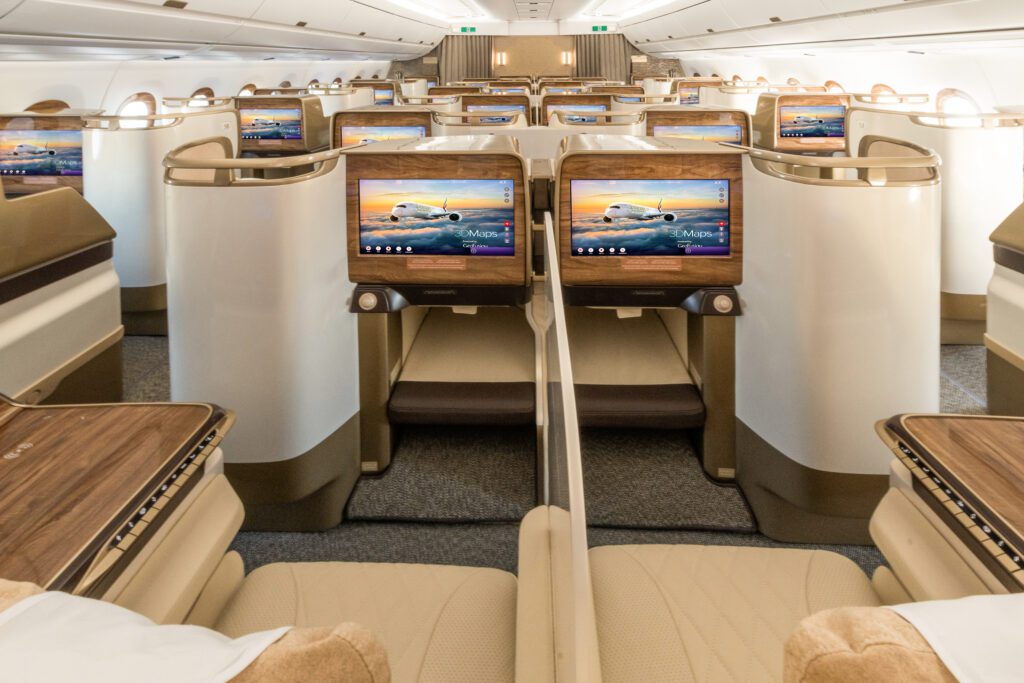
In other words, passengers will soon get to enjoy a pretty consistent seat experience no matter what aircraft type they fly in. Although, of course, some seats will have more bells and whistles and upgraded tech depending on how recently they were manufactured.
But while offering a consistent experience is undoubtedly laudable, there’s no denying the fact that competition for high-paying premium passengers, especially across the Persian Gulf, is a fierce business.
Qatar Airways has already unveiled the next iteration of its award-winning QSuite Business Class seat, with high-sided walls, privacy doors, a shared ‘lounge’ space for passengers traveling together, and upgraded tech like mobile device charging, and even a lockable storage drawer for valuables.
Meanwhile, Emirates has eschewed the privacy door trend, with what will be seen by some industry commentators as an inferior product.
The reason is probably more than just a desire to offer consistency across its fleet. While Emirates is often seen as an innovator, the airline has also proven to be remarkably risk-averse when introducing new products.
I can’t help but wonder whether veteran airline president Sir Tim Clark views privacy doors on Business Class seats as a fad or as a feature that would ‘cannibalize’ demand for the airline’s popular First Class product.
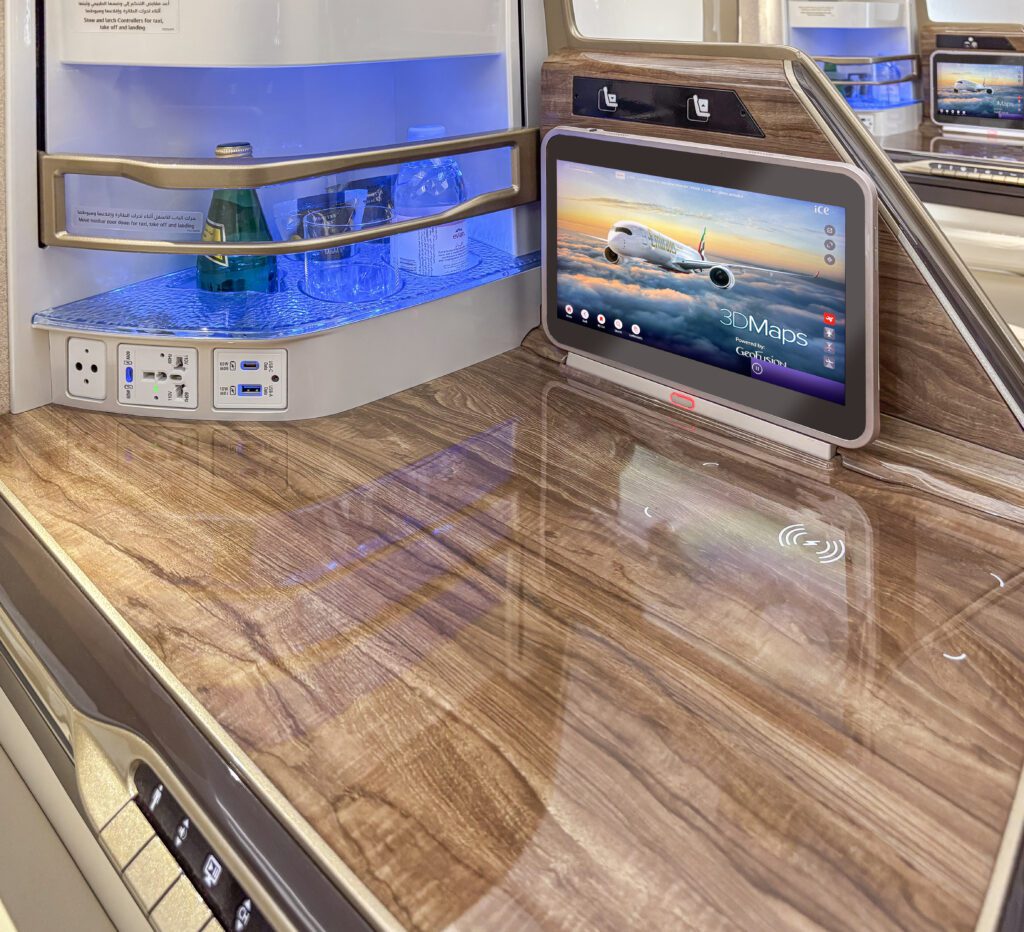
That’s certainly how Sir Tim viewed Premium Economy, refusing for years to entertain the idea of introducing the product over fears that the middle cabin would see more Business Class passengers downgrading rather than Economy passengers splurging on extra comfort.
In the end, Sir Tim relented and allowed a limited rollout of Emirates’ first Premium Economy product in late 2020. It didn’t take long for the one-time skeptic to become an ecstatic convert, and plans were quickly drawn up to roll out Premium Economy across much of the carrier’s fleet.
It is perhaps telling, though, that Sir Tim was quoted as saying that Emirates’ Premium Economy was akin to an international Business Class seat—that is, if you compare the seat to Business Class seats from the 1980s.
What might be surprising is that Clark, who received a Knighthood for his services to the aviation industry in 2014, was also the brainchild behind Emirates’ now famous onboard bar and shower on the A380.

It could then be that Emirates has chosen a new Business Class that lacks true innovation because the airline not only knows its typical passenger really well but that the Emirates experience that passengers know and love so much is greater than the sum of its parts.
While Emirates hasn’t invested in a new style of Business Class seat, it has instead spent a lot of money on making the seat and the rest of the cabin look and feel luxurious.
You would be hard-pressed not to admire the high-spec finishes that make the interior of Emirates’ first A350 feel more like a high-end hotel rather than a mode of mass transportation.
Gone are the days of gaudy gold and desert dune patterns swathed in thermoplastic across the cabin, and instead, luxurious creams, bronze, and light shades of blue make for an attractive sight for the eyes.
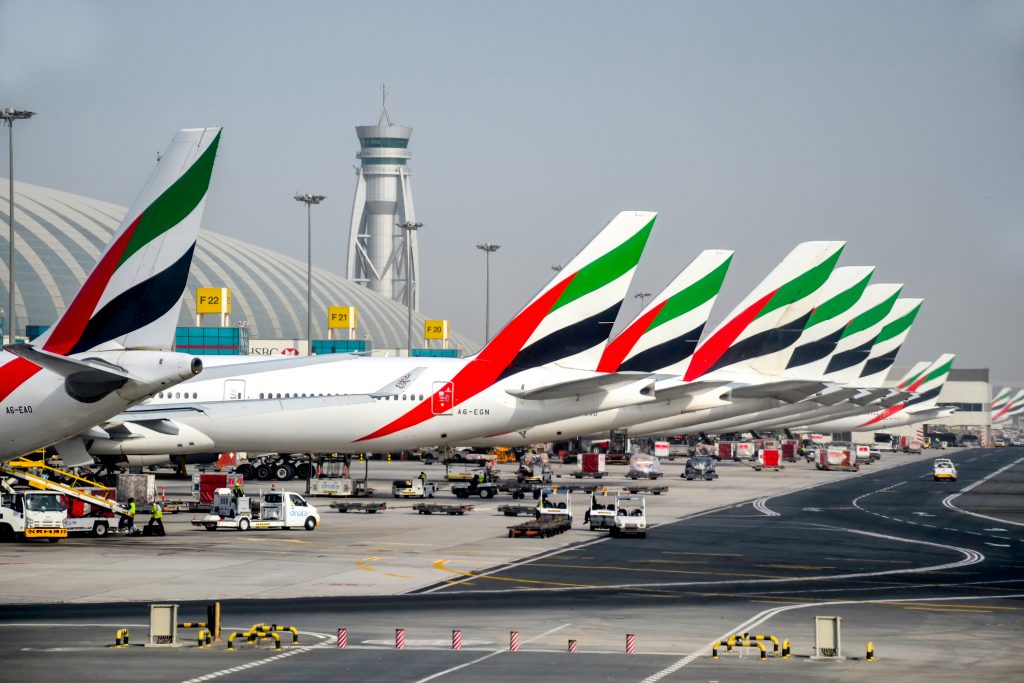
Emirates, of course, still invests heavily in its inflight entertainment system, offering thousands of movies, TV shows and music tracks, along live television and five different external camera views on its A350.
Onboard bathrooms have been appointed to a high standard—an area so often overlooked by airlines. Emirates says it has maintained the roomy size of the bathroom on its double-deck A380.
Then there are the other features that remain consistent across the Emirates experience, like the notoriously tight control that the airline maintains on the appearance standards of its mostly young cabin crew.
Emirates has long attracted the premium leisure market, and these kinds of passengers aren’t as interested in privacy as sharing the experience with their friends, family, and loved ones.

They also aren’t as likely to be traveling with different airlines multiple times a year, meaning there is less chance that they’ll be comparing Emirates’ Business Class seats in the way that airline bloggers do.
At the end of the day, though, Emirates is long past its ‘growing pains’ phase of expansion, and there is much less of a need for it to grab attention with the latest innovations.
The airline has built an enviable route network that is hard for even some of the biggest rivals to compete with. Not only that, but Emirates’ home in Dubai is a true destination in itself—a position that Qatar Airways or Etihad Airways can only dream of finding themselves in.
Mateusz Maszczynski honed his skills as an international flight attendant at the most prominent airline in the Middle East and has been flying ever since... most recently for a well known European airline. Matt is passionate about the aviation industry and has become an expert in passenger experience and human-centric stories. Always keeping an ear close to the ground, Matt's industry insights, analysis and news coverage is frequently relied upon by some of the biggest names in journalism.








Appreciate your input re Emirates A350 Business Cabin .
Yes , learning from the A380 experience , travelling from CHC , on yearly trips to Europe ,my partner & I have grown to appreciate the setup for couples in E & F seats….
However, having to stop in transit at SYD on the way to DXB is not exactly an overwhelming experience!
Perhaps , as Emirates acquires more A350-1000 , a direct link CHC-DBX could be doable , maybe on a reduced frequency basis?
This is a smaller market I know, but could complement nicely the AKL A380 Flights ?
JP
This just seems as another unfriendly business’s class cost cutting. The seats are multiplied and not thr staff. Care will be less. Next stage will be downgrade of the F&B.
Overall, business class becomes a highly glorified economic, presented as an upgrade to first. But the latter only in the ticket cost!